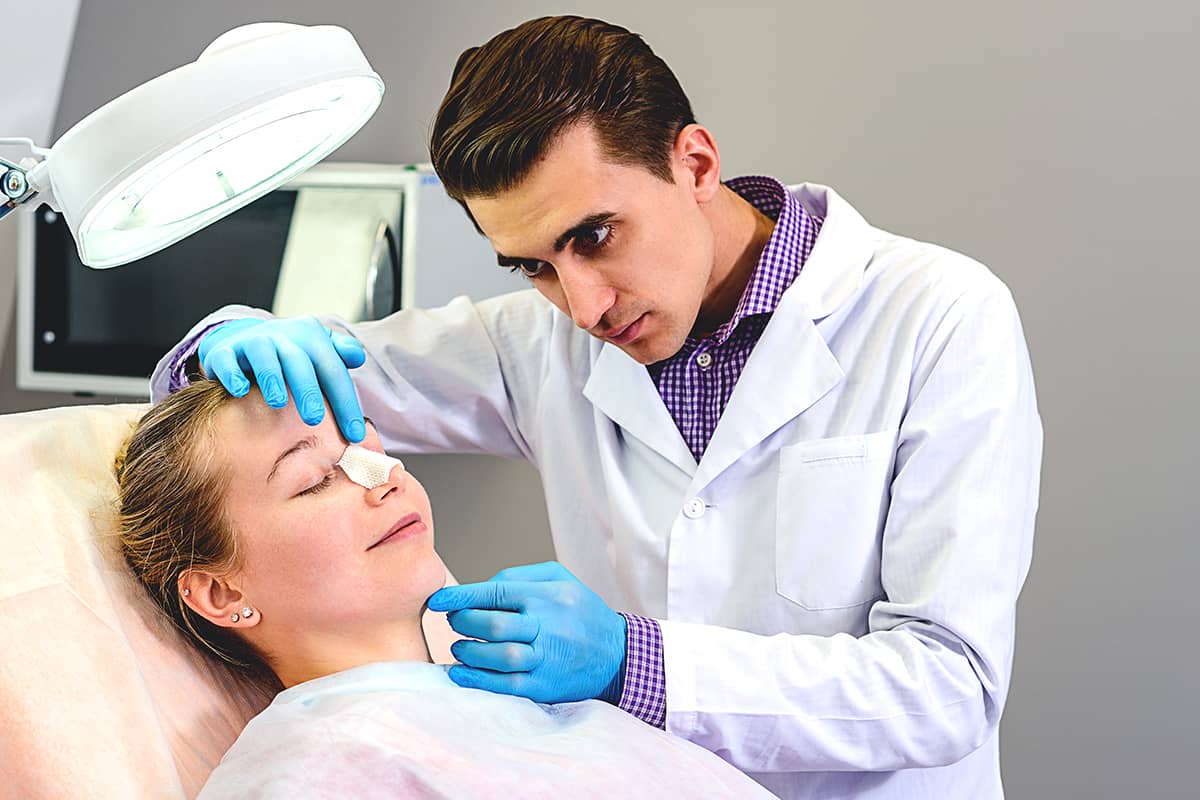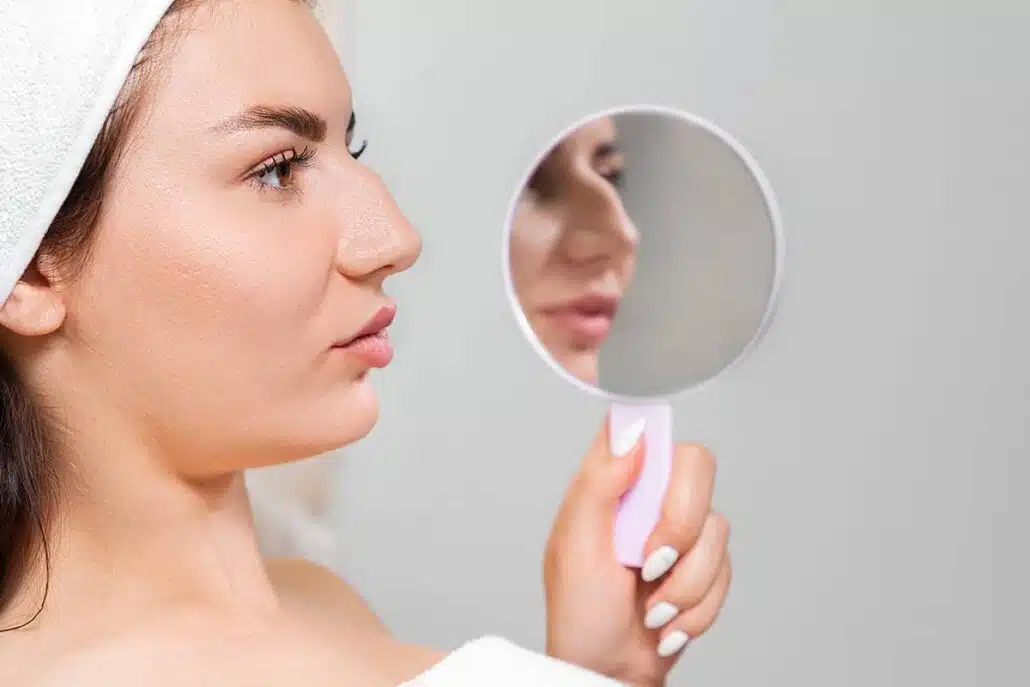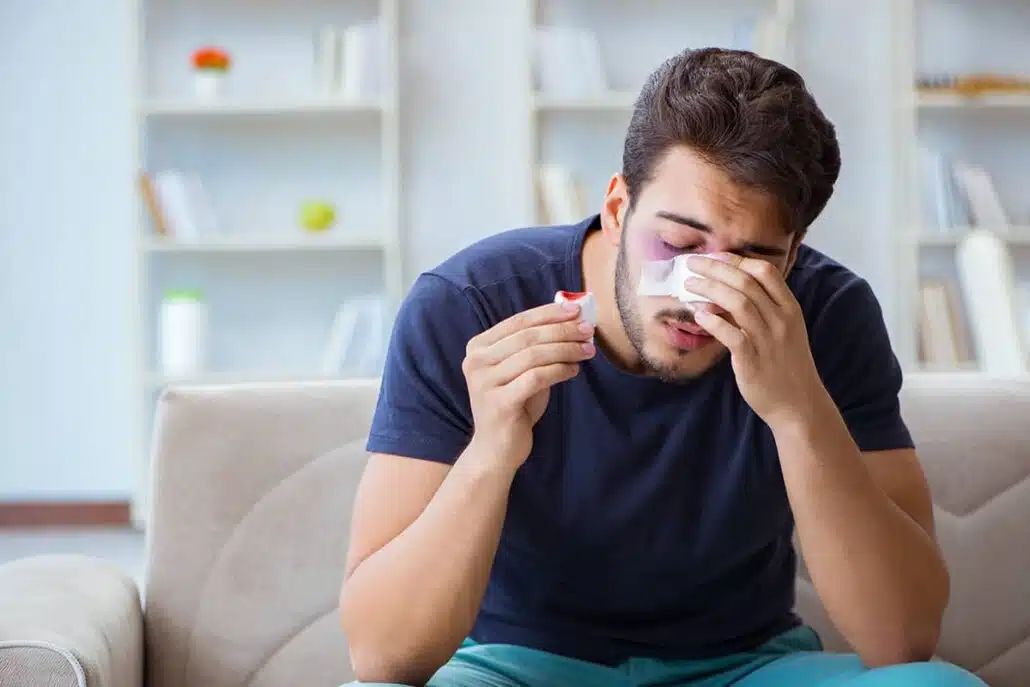Revision Rhinoplasty Surgery Success Rates and the Most Common Reasons for Failure

Rhinoplasty is a nasal surgery that changes the shape and appearance of the nose by making it bigger or smaller, removing a hump, improving the tip, altering the angle, improving breathing issues, removing polyps, and treating chronic allergies. Rhinoplasty is a popular and effective surgery. However, some patients are unsatisfied with their results and must undergo a second surgery called revision rhinoplasty.
You are not alone if you have had rhinoplasty and are frustrated with the results.
Read on to learn about revision rhinoplasty, success rates, and the most common reasons for failure.

Why is Revision Rhinoplasty Needed?
The American Society of plastic surgeons reports that over 220,000 rhinoplasties are performed yearly in the USA. It is one of the most common facial plastic surgical procedures with multiple benefits.
Patients can simultaneously improve their breathing and make cosmetic changes during rhinoplasty. However, a second surgery is sometimes needed to adjust or repair issues.
Some of the most common complications for revision nose jobs include:
- Asymmetrical nose shape
- Excessive Scar tissue
- A pinched, flat, or crooked nose
- A nose that is too broad, short, thin, or long
- Breathing disorders
- Improper angle
- Results appear unnatural
- Unsatisfactory results
- The original surgeon did a poor job
- Improper surgical techniques
- Too much cartilage or tissue removed
One of the concerns with rhinoplasty is the surgeon’s inability to predict rhinoplasty difficulties. The success rate among experienced plastic surgeons with years of advanced training is relatively high, with less than 5% of patients requesting a revision rhinoplasty. However, this is a complex analysis because some contradictions are involved. For example:
- Patients with obstructive sleep apnea are at a higher risk for post-surgery complications.
- Patients who inhale drugs, especially cocaine, suffer inflammation and vasoconstriction and are more prone to post-surgery complications.
- Patients may have blood disorders or coagulation issues that make it impossible to perform rhinoplasty.
- Patients with unstable medical conditions are more likely to experience dissatisfaction after rhinoplasty and may not be eligible for a nose job unless it’s performed to improve breathing.
- Unrealistic expectations could impact the healing process and the rhinoplasty results.
- Smoking interferes with the patient’s breathing and healing after rhinoplasty.
Revision Rhinoplasty Success Rates
Dr. Daniel G. Becker at the Becker Rhinoplasty Center specializes in revision rhinoplasty. He has patients who travel from all around the world to have primary and revision rhinoplasty. Revision rhinoplasty success rates depend mainly on specific variables. The average revision rhinoplasty success rate is around 80%, but a highly qualified surgeon’s success rates are much higher.
Each revision rhinoplasty procedure is unique, and an experienced rhinoplasty surgeon only performs the surgery if they determine a high chance of success. The success rate typically depends on the severity of breathing issues, grafting, the length of time since the first rhinoplasty, the surgeon’s experience and expertise, the amount of nasal scar tissue, and the patient’s compliance with pre- and post-surgery instructions.
While secondary rhinoplasty typically addresses a failed rhinoplasty, revision rhinoplasty is sometimes planned. For example, a patient may expect the likelihood of revision rhinoplasty to treat a genetic issue, disease, or trauma. Nasal reconstructive surgery typically occurs in stages, and the patient can undergo one or more revision rhinoplasties to achieve the final results.
Most Common Reasons for Revision Rhinoplasty Failure
Revision rhinoplasty failure is rare when a qualified and experienced plastic surgeon, such as Dr. Becker, performs it. Some common reasons for revision rhinoplasty failure include:
- Unrealistic expectations
Experienced doctors understand the importance of providing each patient with realistic expectations. While revision rhinoplasty can improve mistakes, restore symmetry, reduce scar tissue, restore breathing, and address issues after primary surgery, you should not expect perfection.
- Impatience
Patients can anticipate excellent results but should expect a longer recovery after a secondary rhinoplasty. It takes about one year for the swelling to subside and for the delicate tissue in the nose to heal.
- Failure to follow the doctor’s instructions
After the procedure, revision rhinoplasty patients must follow the doctor’s instructions carefully to achieve optimum results. Avoid physical contact sports, do not chew dense foods immediately after the surgery, and stop smoking. The doctor gives a complete list of aftercare instructions during the initial consultation.
- Inexperienced surgeon
Rhinoplasty revision surgery is a delicate procedure that must be performed by a highly qualified and experienced board-certified plastic surgeon. Poor planning, lack of precision, excessive extraction of nasal bone or cartilage, damage to nasal tip cartilage, and unnecessary or inadequate use of skin grafts are some of the reasons for a failed secondary procedure.
Top Rhinoplasty Revision Questions
Who is a suitable candidate for revision rhinoplasty?
Ideally, any primary rhinoplasty patient who wants to improve their results or nasal function is a candidate for revision rhinoplasty. The facial plastic surgeon can determine if you are a good candidate based on the anticipated results of the previous nose surgery. Patients should usually wait one year after their initial nose surgery for a revision procedure.
How long do you have to wait before a revision nose job?
Most patients must wait 12 to 18 months before undergoing revision rhinoplasty. If revision rhinoplasty is performed too soon, the results can be disappointing. Each rhinoplasty procedure is unique, and some take longer to heal based on grafts and complicated issues.
The surgeon examines your nose and provides a timeline for the secondary rhinoplasty. The nose does not take on its final form for some time, as swelling can take months to subside. Adding trauma to a healing nose or an incomplete recovery may harm the revision rhinoplasty.
Is Rhinoplasty Revision Risky?
The success of secondary rhinoplasty depends mainly on the experience and expertise of the surgeon. The operation is more complicated, but the risk is similar to the primary rhinoplasty. Typical revision rhinoplasty complications include swelling and bruising around the eyes and nose. Follow the doctor’s post-operative instructions to ensure the difficulties disappear quickly and the nose heals without complications.

Choosing a Rhinoplasty Revision Surgeon
Rhinoplasty revision is one of the most complex plastic surgeries, and you need a surgeon with extensive experience performing rhinoplasty. The best rhinoplasty surgeon is double board certified in otolaryngology (ENT) and facial plastic surgery. An expert surgeon in both primary and revision surgeries has a significantly lowered chance of having to redo a secondary procedure.
Dr. Becker’s approach to primary and revision rhinoplasty is to make his patient happy. With this in mind, he takes a conservative approach and seeks a natural, un-operated appearance. He avoids overaggressive maneuvers, focuses on structural support, maintains the patient’s cultural heritage, and provides a natural appearance. Dr. Becker shares before and after photos on his website that reflect his approach.
Contact Becker Rhinoplasty in New Jersey and Philadelphia for a rhinoplasty revision consultation with Dr. Daniel G. Becker, MD, FACS. Rhinoplasty is a science and art. Dr. Becker’s high revision rhinoplasty success rate is due to his artistic ability, knowledge, experience, and well-developed judgment.